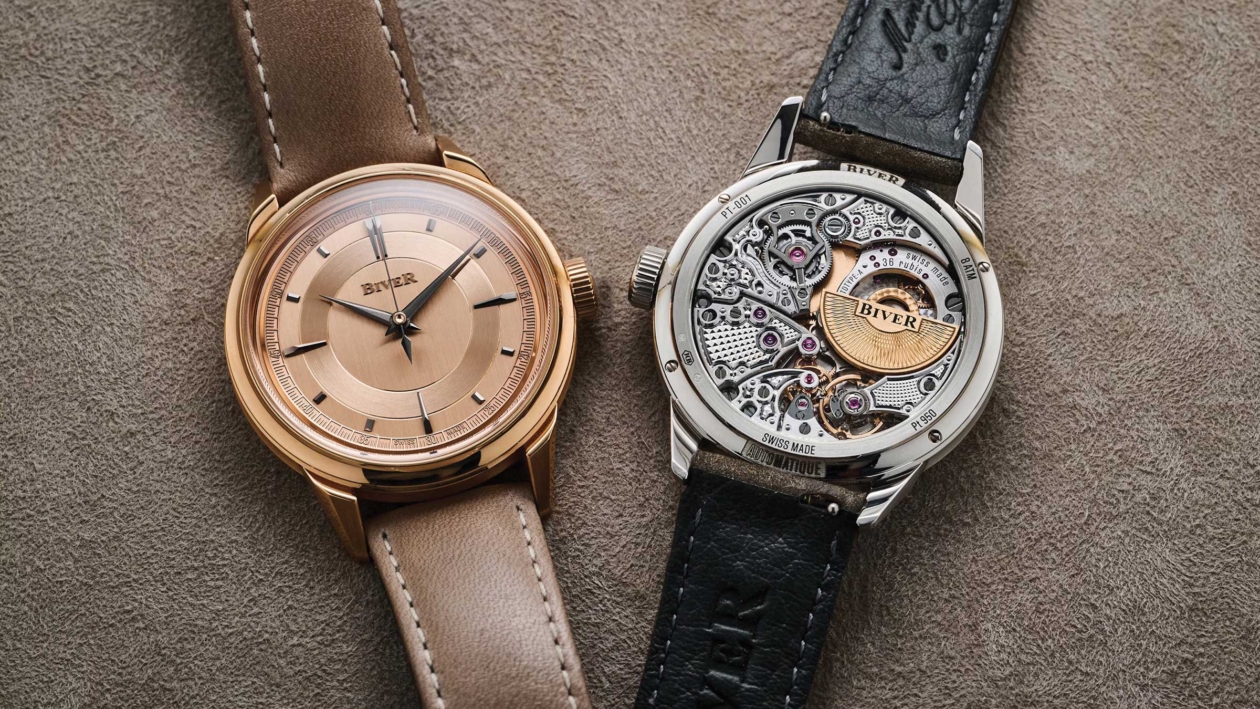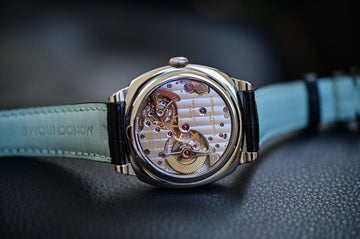Watchmaking has always been about solving big problems in a small space. Every part, from tiny gears to delicate jewels, shows a strong focus on making things better. One of the best ideas in this field is the micro-rotor movement. It's often forgotten next to more complex parts, but it is a very clever and simple solution in automatic watches.
At its heart, the micro-rotor fixes a problem that has been around since self-winding watches were first made: how to have the ease of an automatic watch while keeping it thin and elegant. The design isn't just a technical fix. It's also a way to keep the watch looking and feeling balanced. For people who appreciate smart engineering, the micro-rotor is a key detail to understand.
The Problem with Size and the Smart Fix

When automatic watches arrived in the 1900s, they changed daily life. People no longer had to wind their watches by hand. The movement of a wrist provided the energy. This convenience, however, had a downside. The traditional spinning weight, called a rotor, sat on top of the movement. This made the watch thicker and messed up the balanced look of the parts inside. Compared to thin, hand-wound watches, early automatic watches often felt heavier and less polished.
The micro-rotor was the clever answer. Instead of a separate layer, engineers put a smaller, spinning weight right inside the main part of the movement. This smart design made the winding system part of the watch's own structure. This kept the watch thin, allowed for a beautiful, balanced layout, and gave the person wearing it the best of both worlds: a watch that wound itself but stayed elegant and slim.
The Hard Part of Making it Small

Making the rotor smaller brought new challenges. A smaller size meant less power, and therefore less effective winding of the mainspring. To fix this, watchmakers found a good solution. They started using very heavy materials like platinum or gold to give the micro-rotor enough weight in its tiny size. This choice of material was key.
Precision was also very important. The small design left very little room for mistakes. Making a smooth and reliable winding system in such a small space needed advanced engineering and careful finishing. Once perfect, the design offered something rare: an innovation that improved the watch without changing its character. The micro-rotor let automatic movements stay thin and balanced without losing performance. It showed that real progress isn't always about adding more. It's about making things better.
What Is a Micro-Rotor?
The micro-rotor is an innovation in automatic watch movements that addresses the challenge of creating a thin, self-winding timepiece. A conventional automatic watch uses a large, semi-circular rotor that spins freely to harness the wearer's motion and wind the mainspring. This rotor typically sits on top of the movement, adding thickness to the overall design.
In contrast, a micro-rotor is much smaller and is positioned within the same plane as the rest of the movement's components, rather than on top of them. This integration significantly reduces the movement's height, making it possible to produce a much thinner watch. The compact size and placement of the micro-rotor require very precise engineering and high-quality bearings to ensure it can efficiently wind the mainspring despite its smaller mass. This elegant solution allows watchmakers to create automatic movements that are both thin and visually appealing, as the micro-rotor doesn't obstruct the view of the movement's beautiful finishing and complex gears.
The Benefits of a Micro-Rotor

To a normal person, a watch with a micro-rotor might not look special. It doesn't have the grand look of other complex parts. However, for a watch fan, it is a smart and refined solution that is worth a closer look.
The way it looks is a big part of its appeal. Since the micro-rotor is built into the movement, it doesn't cover up the parts inside. This gives a much clearer view of the watch's inner parts. You can see the gears, polished bridges, and other details that make each watch special. This smart display of technical skill is what makes it stand out.
Good examples include Patek Philippe's Caliber 240, a movement known for being very thin and reliable. It has been used for decades. The F.P. Journe Octa line also shows how the micro-rotor allows for a long power reserve in a thin case. Laurent Ferrier's Galet models show how the micro-rotor can support designs that are simple on the outside but advanced on the inside. These watches show that real technical success doesn't always need to be loud or showy. Additionally, the Sea-Gull movements also utilizes a micro-rotor movement, specifically the ST4020.
The micro-rotor shows a way of making watches that focuses on balance and being discreet. It is for people who like engineering that helps the whole design, instead of just drawing attention to itself. It is for those who appreciate subtlety, and who understand that elegance often comes from what is not seen or said.
Final Thoughts
The micro-rotor is not likely to be the main point of advertisements or auctions. But that is part of its charm. It shows a type of progress that is measured not by adding layers or features, but by making things more refined and simple. To own a watch with a micro-rotor is to enjoy the ease of an automatic watch without giving up the comfort and style of a thin movement.
For a watch fan, it is a detail that speaks quietly but with meaning. It shows a love for the side of watchmaking that values a good look, efficiency, and smart design. The micro-rotor may not get instant attention, but for those who understand it, it is one of the most rewarding achievements in modern watchmaking.
Experience Modern Engineering Made in India with Argos Olympus
You now understand what makes a watch special. The Argos Olympus is for people who value quality, inside and out. With its precise automatic movement and elegant design, it proves that genius is in the details. Discover the Argos Olympus and wear a masterpiece of watchmaking.

